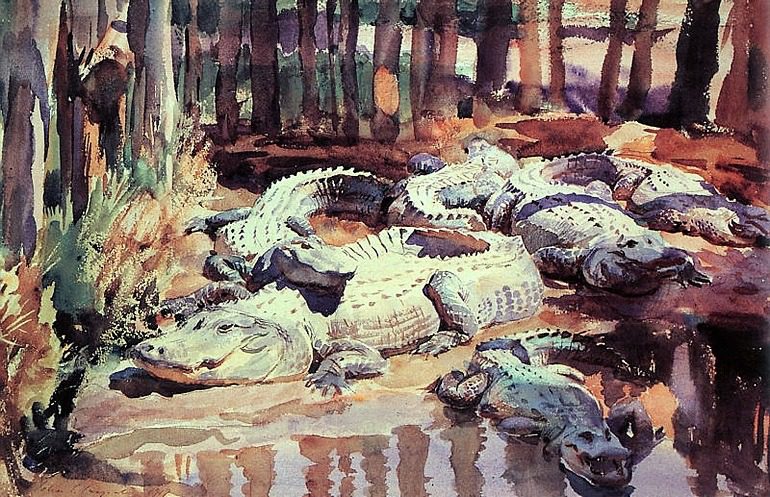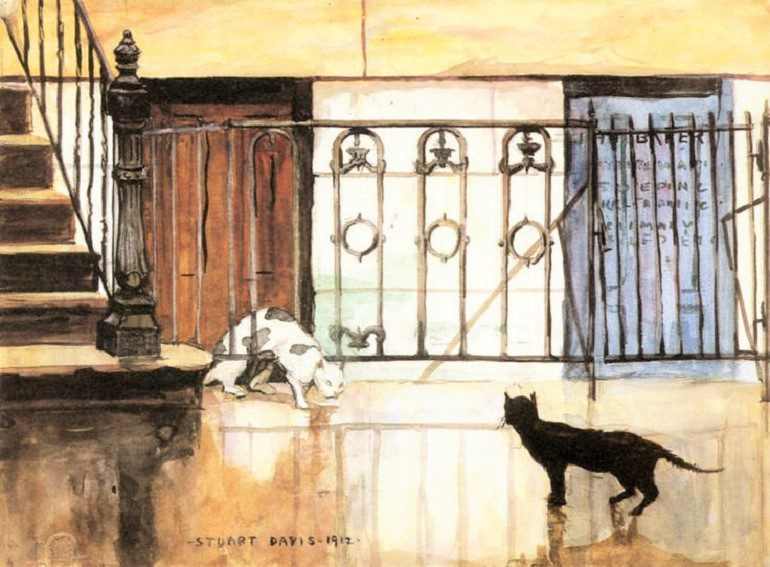ART NEWS
Apple Picking, a watercolor painting by Winslow Homer, is one of the American watercolor paintings on display in American watercolor at the Philadelphia Museum of Art.
ART REVIEW
American Watercolor paintings in the Age of Homer and Sargent, at the Philadelphia Museum of Art, celebrates American art and how a rejected medium won the heart of many artists.
BY KAZAD

Thomas Eakins, The Dancing Lesson (Negro Boy Dancing), 1878. Image: Philadelphia Museum of Art Watercolor on white wove paper
PHILADELPHIA— A new exhibition at the Philadelphia Museum of Art examines the growth of watercolor as a medium of artistic expression in America. Titled American Watercolor in the Age of Homer and Sargent, the exhibition brings together stunning landscapes and illustrations, and designs for ceramics and stained glass.
American Watercolor features works by prominent watercolorists, including Winslow Homer, John Singer Sargent, John La Farge, Thomas Moran, and William Trost Richards. Others are Thomas Eakins, George Inness, Maxfield Parrish, Jessie Willcox Smith, Louis C. Tiffany, Childe Hassam, Maurice Prendergast, Charles Demuth, and Edward Hopper.
Watercolor: A Medium for Amateurs
For decades, watercolor was seen as a medium for amateurs, women, and commercial artists. It was scorned by mainstream painters of the mid-1800s. However, the medium gained prominence with the creation of the American Watercolor Society in 1866. Its annual exhibition became a platform for conversations about the medium, and a forum for the convergence of artists of all ages, styles, and backgrounds.
Winslow Homer’s Apple Picking is an important example of why watercolor is today an important medium for American artists. The landscape painting includes two girls picking apples. In the hand of one of the girls is a basket to carry the apples. Using sharp contrast of light and dark shadows, Winslow gives prominence to the apple pickers walking through a beautiful lush landscape with apple trees.
The luminosity and Winslow’s creative use of the watercolor was the impetus for other artists to embrace the medium. Although his rendition of the girls in Apple Picking looks unfinished, details of their dress, body language, and composition imbue the painting with character. Using different shades of green, blues, and grays, the artist shows that watercolor is a great medium.
The Dancing Lesson
The Dancing Lesson (Negro Boy Dancing) by Thomas Eakins presents a different approach to the use of the watercolor. For Thomas, watercolor was a serious medium of artistic expression and not just for sketching. Unlike Winslow Homer’s watercolor painting, Thomas’s painting is detailed in every aspect. In the painting is a middle-aged man playing banjo, the dance instructor, and the boy dancing. Despite the arresting charters of the banjo player and the towering image of the dance instructor, Thomas’s composition makes the child the focal point of the painting.
Evidently, for Thomas, details are very important. From body language to facial expression and movement, every detail is articulated in Thomas’s painting of an African American boy dancing during a lesson. Even the wall with a small image in the corner has its own character.
Watercolor in America
The show at the Philadelphia Museum of Art provides a historical context to the growth of watercolor as a medium in America. Using rarely seen masterpieces by famous artists, the museum reveals the diverse use of the medium.
Georgia O’Keeffe was one of the artists who developed a fascination for watercolor as a medium of artistic expression. Unlike other artists who used the medium for portraiture and landscape painting, Georgia O’Keeffe’s works are abstract in nature. In Evening Star, No. II, for instance, she explores the flexibility of the watercolor as a transparent medium to build different layers of red.
At the top of the red is a dab of yellow color At the center of the yellow is a tiny white star archived by allowing the white of the paper to show through the paint. Below the big concentric reds is a blue and a green line made with single brush strokes. This must have been a fun piece for Georgia O’Keeffe. The exploration of the wet-on-wet technique must have heightened her creative sensibilities.
The popularity of watercolor grew as illustrators, crafts designers and landscape artists, including the impressionists began using it. Soon after, many artists embraced the medium, and watercolor soon became the medium of choice for many famous painters.
American Watercolor Paintings

John Singer Sargent, Muddy Alligators, 1917. American Watercolor paintings. Watercolor over graphite, with masking out and scraping, on wove paper. Image: Philadelphia Museum of Art

Stuart Davis, Two Cats, American, 1892 – 1964. Image: Philadelphia Museum of Art

John William Hill, West Nyack, New York, 1868. Watercolor with traces of opaque watercolor over graphite pencil on medium-weight, slightly textured wove paper. Image: Philadelphia Museum of Art
